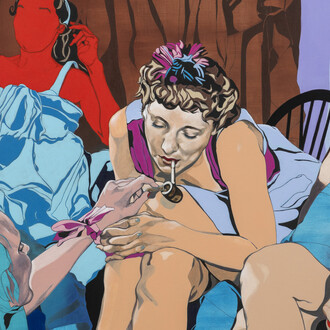In Between seeing and saying, two ways of looking come together: the quiet systematics of Marc Nagtzaam alongside the exploratory gaze of Marike Schuurman. Pencil and camera. Two distinct media, one question: how do images acquire meaning, and what remains beyond view?
Marc Nagtzaam creates drawings in which reduction and excess exist in a delicate balance. Grids, patterns and fragments of language emerge intuitively and are layered repeatedly until a structure or composition presents itself. Out of a series of lines emerges an almost architectural pattern — at once rigorous and personal. The work bears the traces of concentrated labour: marks in the margins, repetition, nuance, subtle shifts. Those who look closely can see the artist’s hand in minute variations — a line that grows slightly thicker, or a corner that doesn’t quite meet.
In this process, Nagtzaam constantly engages with opposites – order and chance, abstraction and gesture – which at times cancel each other out, at others reinforce one another. The result is a space that continually reshapes itself, yet never closes. A rhythm without closure, unfolding as a visual line of thought.
Marike Schuurman’s photographic practice examines the often absurd relationship between humans and their environment. She interrogates the ambiguities of human-made spaces and landscapes, where boundaries are in constant flux. What at first appears natural often turns out to be carefully constructed; what seems orderly reveals itself, upon closer look, as chaotic. Her photographs explore not only what is visible, but also what escapes the eye, probing the limits of perception, imagination and representation.
Schuurman experiments with specific photographic techniques, shaped and informed by her subjects, through which she renders the spatial experience and context of each location tangible, infusing familiar situations with an unexpected charge.
Together, Nagtzaam and Schuurman show that images are never neutral. Between seeing and recording, between showing and concealing, a tension emerges that sustains their work. What do you reveal, what do you withhold, and what does that tell us about how we understand the world? Abstraction and conceptual enquiry do not oppose one another, but rather reinforce each other. In an age when images circulate faster than ever and meaning erodes in the flow, the work of Nagtzaam and Schuurman establishes a different rhythm: slower, more attentive. It invites the viewer to look again – at order and chance, at what is revealed and what remains hidden.












